Despite all the cars I’m lucky enough to pilot, every time I road-test and live with a Hyundai i30 hatch I’m reminded how good it is. That’s coming from a parent, a car enthusiast and somebody who’s been testing cars for a decade.
The updated i30 Hatch range arrived in Australia towards the end of last year with new styling and more standard features – including new tech.
Hyundai hopes that this refresh will win you over and tempt you away from rivals, such as Toyota’s Corolla, the Mazda3 and Kia Cerato.
There are sedan versions of all these cars, too, but in this review I’ll focus on the hatchback range of the i30.
Hyundai I30 2021: Active
| Engine Type | Inline 4, 2.0L |
|---|---|
| Fuel Type | Unleaded Petrol |
| Fuel Efficiency | 7.4L/100km (combined) |
| Seating | 5 |
| Price From | $20,130 - $25,520 |
| Safety Rating |
|
Is there anything interesting about its design?
8 / 10
The third-generation i30 was revealed to the world in 2016, but five years feels like forever in car life spans, which is why there are updates designed to freshen up interiors and exteriors to keep the tech current and stop the looks from dating.
The updated i30 was given a new face with a wider, more elaborate grille flanked by new LED DRLs, redesigned headlights, and front and rear bumpers. Also, Hyundai spotters at parties will tell you that the rear reflectors are now located lower – that’s your cue to pretend you’ve seen someone you know across the room and hastily remove yourself from that conversation.

The interior remains much the same as the previous model, but with a larger 10.25- inch screen on the Elite and N Line Premium grades. The leather in the Active lifts the cabin above the cloth seats in the entry-grade i30, which still has a premium look with its soft-touch surfaces and digital instrument cluster.
The N Line cars are almost indistinguishable from the fully fledge hardcore i30N with their body kits. We’re talking N Line black bezel headlights, N Line front bumper with mesh grille, N Line rear bumper with diffuser and dual exhaust, plus 18-inch alloys wheels with Michelin Pilot sport 4 rubber.

N Line interiors are sporty with red stitching in the leather upholstery, metal pedals, N Line gear knob and an N Line steering wheel.
As for paint colours, only N Line cars can be had in Lava Orange, but the rest of the grades come in Polar White, Phantom Black, Fluidic Metal, Amazon grey, Intense Blue and Fiery Red.

What are the i30’s dimensions? Well, it’s classed as a small car, but to be exact the i30 is 4345mm long, 1795mm wide and 1453mm tall.
How practical is the space inside?
8 / 10
I know what you’re thinking – a hatch isn’t as practical as an SUV, right? Well, I can tell you that the Hyundai Kona small SUV is nowhere near as practical as the i30 hatch I’m reviewing for you here.
Sure, the Kona is about 13cm shorter in length than the i30, but a lot of people might weigh this little SUV up against the hatch.
For me, as a dad with a six-year-old child, I’d pick the i30 over the Kona for practicality. Here’s why.

The i30’s rear doors open wide, making it easy to climb in and out, and also put children into their car seats. The rear door pockets in the i30 are also large, while the Kona’s are tiny. The i30’s 395-litre boot is bigger than the Kon’s 274-litre cargo capacity, and it has a lower load lip.
Cabin storage is good. The centre console box is deep and there’s a large covered area in front of the shifter for phones and wallets. I also liked that the two cupholders up front have a ‘roller door’, which can be pulled shut to hide coins or valuables.
Rear legroom in the i30 isn’t great for me, but I’m 191cm tall and can only just sit behind my driving position. That said, the Kona’s back seat is even tighter.
The entry-grade i30 also has directional air vents in the second row which are must-haves for kids and not even the Kona N Line has those.
The main practicality gripes I have about the i30 is that the entry grade and the Active above it don’t have a proximity key or push-button start.

That means having to ‘beep’ the fob to lock and unlock the car and actually put the key into the ignition to start it.

Does it represent good value for the price? What features does it come with?
8 / 10
There are five grades in the i30 Hatch line-up. As a guide, list prices start at $23,420 and top out at $36,220.
That starting price is for the entry grade, which is just called the i30 and that’s for the version with the manual gearbox. If you want an automatic it will be $2000 more.
Stepping up to the Active is $26,920, and above that is the Elite for $30,220
Then there are the two sporty grades: the N Line which comes with a manual for $29,420 or auto for $2K more; and the N Line Premium which also comes with a manual at a list price of $34,220 or an auto for an extra $2000.
The value is good especially on the entry grade i30 which comes standard with an eight-inch screen, wireless Apple CarPlay and Android Auto, a seven-inch digital instrument cluster, rear view camera, leather steering wheel, auto headlights, LED DRLs, 16-inch alloy wheels and the family-must-have directional rear air vents.

The Active doesn’t come with a whole lot more, but there is leather upholstery, 17-inch alloy wheels and exterior chrome trim.
The Elite is loaded with standard features. So, along with the entry-grade’s equipment, plus the leather seats and 17-inch alloy wheels form the Active there’s an Infinity premium sound system, digital radio, wireless charging, proximity key and push-button start, a 10.25-inch media screen with sat nav, dual-zone climate control and rain-sensing wipers.
The N Line has all the Active’s gear plus 18-inch alloy wheels, LED headlights and taillights, wireless charging, proximity key and push-button start, dual-zone climate control and rain sensing wipers. The reason for getting the N Line though is for the more powerful engine and sports suspension. The N Line also has a tough-looking body kit.
The N Line Premium adds a sunroof, tinted glass, a 10.25-inch media system with sat nav (yes, the regular N Line doesn’t get that), heated and ventilated front seats, Infinity stereo, power driver’s seat and digital radio.
Metallic paint is a $495 option and if you want to know what colours there are to choose from then see the Design section below.
You may have spotted that the entry-grade i30 has wireless Apple CarPlay and Android Auto? Well the rest of the grades need you to actually plug in your phone to use these apps. So, while entry car has the convenience of wireless connection, I found that my phone dropped out on calls occasionally which was frustrating.
What are the key stats for the engine and transmission?
8 / 10
There two engines in the i30 line-up, both petrol. There’s the 2.0-litre four-cylinder, which makes 120kW and 203Nm or the turbocharged 1.6-litre four-cylinder, which produces 150kW and 265Nm.
The turbo engine is the pick, offering not only more grunt but it’s paired up with a seven-speed dual-clutch automatic transmission, rather than a traditional six-speed auto matched to the lower powered engine.

Thing is the turbo engine is only available on the N Line and N Line Premium, while all the other grades come with the lower-powered 2.0-litre.
Those N Line cars also come with the option of a six-speed manual gearbox, and it’s also offered on the entry-grade i30, too.
How much fuel does it consume?
7 / 10
The turbocharged 1.6-litre and the 2.0-litre engine only need 91 RON petrol which is the most affordable at service stations, and there’s not much of a difference in consumption between the powerplants either.
According to Hyundai, the 1.6-litre with the auto transmission should use 7.1L/100km while the manual will bump that to 7.5L/100km. Hyundai says the 2.0-litre engine with the auto should use 74.L/100km and 7.3L/100km with the manual. Those consumption figures are for a combination of driving conditions, in other words: open roads, urban roads and everything in between.
My own testing saw me driving an entry-grade i30 and after 161.7km I used 12.18 litres (measured at the fuel pump). This comes out to 7.9L/100km. By the way, the trip computer was reporting 7.7L/100km.
That’s a pretty thirsty result for my test car and even the suggested consumptions are on the higher side.
Really the i30 should be available with a hybrid powertrain, or even as a fully electric vehicle. So, points are lost here for the i30 range’s fuel economy.
What's it like to drive?
8 / 10
Right at the start of this review I said that I’m reminded how good the i30 is every time I test one. There’s the practicality and safety, but a big part of what I like so much about this car is the way it drives.
All i30s are easy to drive and comfortable. The suspension has been developed here in Australia for our roads and the result is a car that handles superbly for the price with a composed ride.
Most recently I road tested the entry-grade i30. As mentioned earlier, all entry-grade cars come with the 2.0-litre engine, which doesn’t have the grunt of the turbo 1.6-litre from the N Line and N Line Premium, but I didn’t think it felt too underpowered.

The N Line and N Line Premium not only have more mumbo under the bonnet, but also sports suspension for better handling.
SUVs are now hugely popular, but driving the i30 hatch was a good reminder, that regular cars don’t wobble, bouncy, or lean as much as their springy, taller counterparts.
That said, I was also reminded about how low you sit in an i30 compared to even the smallest SUV and that the steering, while accurate and smooth, feels heavy for a little hatch.

Visibility is good and this combined with fairly diminutive dimensions made the i30 easy to park.
When it was time to return the i30 after a week, I swapped it for the Kona, which is smaller but somehow felt bigger and more cumbersome to drive.
Warranty & Safety Rating
What safety equipment is fitted? What safety rating?
8 / 10
The i30 was given the maximum five-star ANCAP rating when it was tested in 2017. That was some time ago, but advanced tech in the i30 has been updated over the years and the current safety offering is impressive.
Coming standard on all grades is AEB with pedestrian and cyclist detection. This AEB system is able to brake for stopped cars between 10-55km/h (10-80km/h if the car is moving), and brake for pedestrians and cyclists between 10-65km/h.
Lane keeping assistance is also standard across the i30 range and so is adaptive cruise control.
Blind spot warning and rear cross traffic alert comes standard on the Elite variant and above.
For child seats there are two ISOFIX points and three top tether mounts across the second row.

A full-sized spare wheel is standard on entry, Active and Elite grades. A space saver spare comes on the N Line and N Line Premium.
What does it cost to own? What warranty is offered?
8 / 10
The i30 is covered by Hyundai’s five-year, unlimited kilometre warranty. That's still lagging behind sister brand Kia's seven-year warranty.

Servicing is recommended every 12 months or 15,000km. For the entry grade, Active and Elite a three-year pre-paid plan costs $777, four years is $1136 and five years is $1395.
For the N Line and N Line Premium a three-year plan is $807, four years is $1116, and five years is $1385.
Verdict
The i30 has become a classic in the way the Toyota Corolla is an Aussie favourite, thanks to a combination of great value, high quality, excellent safety, practicality and driving enjoyment. Throw in good looks, which are now even more high-end and glitzy, and the i30 represents a superb package.
As for the sweet spot in the range, there are two: the entry-grade i30 is priced super sharply., but the Elite grade is excellent value for money.
Pricing Guides
















































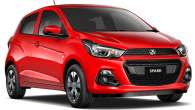
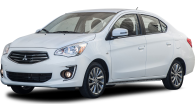






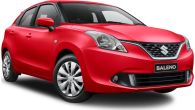





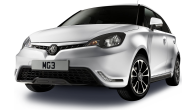


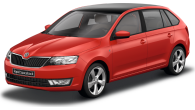

.jpg)
.jpg)

.jpg)

